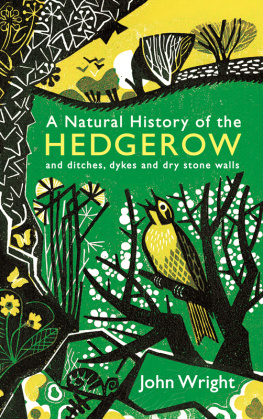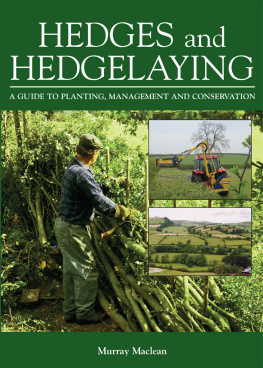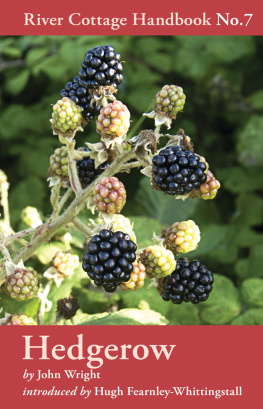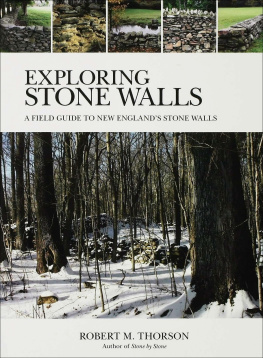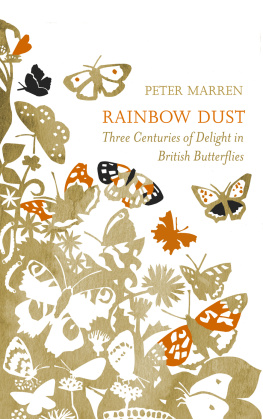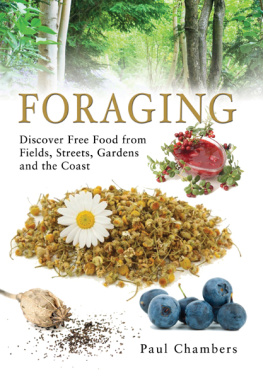Chapter 1
IN THE BEGINNING
Every year I visit the New Forest in Hampshire to explore its huge number of species of fungi. The best places to find rare and interesting specimens are the old enclosures of pine and birch, beech and oak. These are interspersed with grassy clearings and separated by open areas of grass and heath. The ensemble created appears primal in a way matched by few other places in Britain. The New Forest has by no means been left unaffected by man, but the management it has received has been both practical and, for the most part, considerate; here, the natural world is allowed the upper hand.
Was this the type of countryside encountered by Britains post-Ice Age immigrants the Mesolithic settlers once the tundra had lifted its icy hand? The trees might have been a little different: elm and lime were much more common in lowland England than they are now, though neither would have thrived in the acid soils of the New Forest. And the grazing animals essential for maintaining grassy clearings and more extensive grassland would probably have been aurochs instead of ponies. But did the grassy glades and open grassland that give the New Forest so much of its varied and cheerful character exist in prehistoric Britain? In fact, it has long been suggested, and is part of common perception, that before agriculture took possession of this land, it was carpeted from coast to coast by closed-canopy, primeval forest a considerably more forbidding prospect than that of the park-like New Forest.
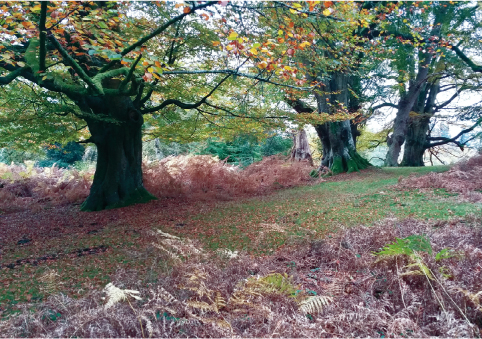
Ancient beech in the New Forest.
As someone who spends a great deal of time in forests, I can say with some authority that they are not good places to find food. Berries and nuts form on the trees of the wood edge, seldom on canopy trees (the naturalised sweet chestnut being a notable if unreliable exception) and the few edible roots that exist belong to grassland and edge habitats. Edible leaves too are found much more out of the forest than in it. Fungi can be collected in some abundance, but they appear irregularly and make a treacherous dinner for those without a good folk knowledge of what is edible. The main source of food in woodlands is game, but hunting in dense woods is fraught with difficulty.
It is attractive therefore to fancy that park-like conditions prevailed and that post-Ice Age settlers found a welcoming home. This idea has been supported by the Dutch forest ecologist Frans Vera who, in his Grazing Ecology and Forest History (2000), makes a strong One of his main arguments is the disinclination of oak, a common tree then as now, to seed successfully in closed-canopy conditions. He argues that oak saplings would require a nursery of bushes in open grassland to establish themselves and form the basis of a new, or at least moving, forest. Vera also persuasively explains away the lack of grass pollen found in the archaeological record. If grassy glades existed to any great extent, then one would be entitled to expect grass pollen. However, he points out that grass extensively grazed by aurochs and wild horses is usually kept short and seldom produces its flowers, so that such grassland is more likely to contain windblown tree pollen than grass pollen. Conservationists wishing to find a model of a primal landscape and ecology have seized upon Veras conjecture.
Appealing as the idea of a large park may be, plenty of academics have argued against Veras view, and a dense blanket canopy is still considered the most likely arrangement of the landscape. The tell-tale signs of extensive grassland such as grass pollens, dung beetle remains (indicating grazing animals), sub-fossilised, low-branched trees (as opposed to high-branched, forest canopy trees) are largely absent, whereas evidence for extensive forest exists in abundance. That would not have been the entire picture, of course, and some open upland areas of grass or heath, reedy flood plains, saltmarsh and grassy coastal fringes would have existed. There would also have been some breaks in the wildwood caused by soil conditions, disease, fallen trees and fire.
Thus it seems likely but no more than that that the canvas upon which British civilisation was drawn was initially an almost continuous forest. Did the early settlers find it an attractive aspect? It would seem not. The evidence that the wilderness was not entirely to Mesolithic mans liking is suggested by signs such as charcoal and pollen that he set fire to large parts of it. While many fires are likely to have been caused by lightning, some archaeologists believe that humans had a considerable and repeated impact on the forest cover.
Countering this idea is the fact that even when trees are felled and left to dry, setting fire to closed-canopy woodland is simply not possible. There are repeated and extensive fires in dry weather in the New Forest, but these are of bracken, gorse and heather, never of oak and beech. Wartime experiences confirm this, as broad-leaved woodlands steadfastly refused to burn even when inadvertently bombed with incendiary devices. Even cutting a tree down in the first place is all but impossible with stone axes, and primal woodland trees would have been enormous. On the other hand, it could be argued, there was a relative abundance of the much more flammable Scots pine during the Mesolithic period, and Mesolithic settlers tended to favour the less densely wooded upland areas, notably chalk, where the trees are shallow-rooted.
An alternative hypothesis is that natural clearings in the forest, caused by trees blown down during storms, were used. The fallen trees could then have been cleared by lopping off and burning the branches, with unturned roots burnt in situ and the trunks hauled away. Any new growth could easily have been controlled with stone tools, fire and grazing animals. However they were created, these clearances were piecemeal affairs; the wholesale removal of the wildwood would have to wait for the Neolithic introduction of agriculture and the efforts of their better equipped Bronze Age heirs.
Mesolithic man was a hunter-gatherer and, as suggested above, unbroken woodland is not particularly bountiful for either hunter or gatherer, so they sought to change it into broken woodland. Charcoal is the chief, and obvious, indicator of ancient forest fires, as it forms dateable layers in the soil. But there are other signs such as pollen and fungal spores which show the organisms that existed before and after a fire. One study found a succession of plants replacing the lost trees, which included stinging nettles, meadowsweet, members of the carrot family and hazel, as well as the grasses which may have been the primary goal of those lighting the fires.large part of the Mesolithic diet. Hazel trees are also more resistant to fire than the oak, lime and elm trees that might be shading them, and would survive as productive, isolated trees in a newly opened environment.
More important than any newly gained access to hazelnut butter and nettle soup is the attractiveness to grazing deer, pigs and aurochs of a grassy, herb-rich clearing, replete with succulent growth from tree stumps and surrounded by low-growing trees. More important still is that a clearing concentrates the animals in one place, allowing them to be hunted much more easily than in close woodland. A sensible place for such clearings is near water, providing an irresistible magnet to prey. Support for the existence of such animals in newly created clearings is provided by the contemporary increase in the spores of dung-loving fungi, the bones of red deer and Mesolithic microliths (small shards of flint used for preparing carcasses).
These clearings often regenerated quite quickly as grazing animals soon learned that the attractive new diner was also a very dangerous one. Clearings were soon abandoned by prey and predator alike and a new one established elsewhere. Some, however, have lasted a very long time indeed. The heathland of Iping Common in West Sussex is believed to be a Mesolithic clearing that, once heather had become established, was unable to revert to woodland.
Next page
